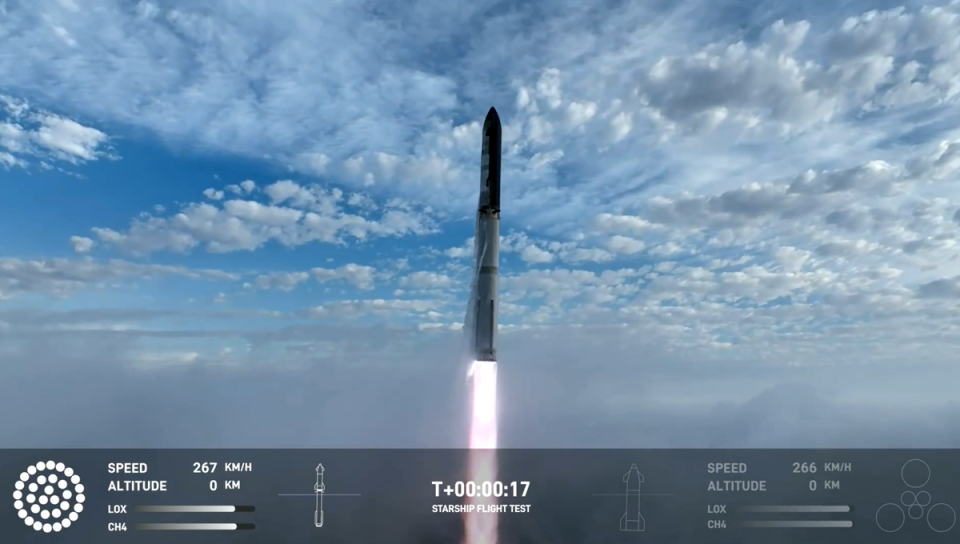Starship launch: SpaceX fires most powerful rocket ever made into orbit

SpaceX has launched the most powerful rocket ever made into orbit.
Starship took off for its third test, with all of its 33 engines carrying it into orbit.
The previous two tests saw the spacecraft explode soon after it was launched.
Elon Musk’s private space company hopes that the Starship craft will eventually carry humans onto the Moon – and then to Mars.
A live SpaceX webcast of the liftoff showed the rocketship rising from the launch tower into the morning sky as the Super Heavy’s cluster of powerful Raptor engines thundered to life in a ball of flame and billowing clouds of exhaust and water vapour.

The launch came less than 24 hours after federal regulators granted SpaceX a launch license for the test.
Unlike the first two test flights last year, aimed mainly at demonstrating that the spacecraft’s two stages can separate after launch, plans for Thursday’s test called for an attempt to open Starship’s payload door and reignite one of its engines in space.
Each of the previous flights were routed toward a planned crash landing near the Hawaiian islands in the Pacific, while the latest flight was targeting a splashdown zone in the Indian Ocean.
Even if it achieves more of its test objectives than before, SpaceX acknowledged a high probability that Starship’s latest flight would end up like the first two, with the vehicle blowing itself to bits before its intended trajectory is complete.
Regardless of how well it performed on Thursday, all indications are that Starship remains a considerable distance from becoming fully operational.
Musk, SpaceX‘s billionaire founder and CEO, has said the rocket should fly hundreds of uncrewed missions before carrying its first humans. And several other ambitious milestones overseen by NASA are needed before the craft can execute a moon landing with American astronauts.
Still, Musk is counting on Starship to fulfill his goal of producing a large, multipurpose next-generation spacecraft capable of sending people and cargo to the moon later this decade, and ultimately flying to Mars.
Closer to home, Musk also sees Starship as eventually replacing the SpaceX Falcon 9 rocket as the workhorse in company’s commercial launch business that already lofts most of the world’s satellites and other payloads to low-Earth orbit.
For Thursday, SpaceX was aiming to at least exceed Starship’s performance with its Super Heavy booster during their inaugural test launch together last April, when the spacecraft exploded over the Gulf less than four minutes into a planned 90-minute flight.
That flight went awry from the start. Some of the Super Heavy’s 33 Raptor engines malfunctioned on ascent, and the lower-stage rocket failed to separate as designed from the upper-stage Starship, leading to termination of the flight.
The second test flight in November made it farther than the first, and managed to properly achieve stage separation, but the spacecraft exploded about eight minutes after launch.
SpaceX‘s engineering culture, considered more risk-tolerant than many of the aerospace industry’s more established players, is built on a flight-testing strategy that pushes spacecraft to the point of failure, then fine-tunes improvements through frequent repetition.
NASA, SpaceX‘s biggest customer, has a lot riding in the success of Starship, which the U.S. space agency is giving a central role in its Artemis program, successor to the Apollo missions that put astronauts on the moon for the first time more than 50 years ago.
While NASA Administrator chief Bill Nelson has embraced Musk’s frequent flight-testing approach, agency officials in recent months have made clear their desire to see greater progress with Starship’s development as the U.S. races with China to the lunar surface.
Additional reporting by agencies

 Yahoo News
Yahoo News 
